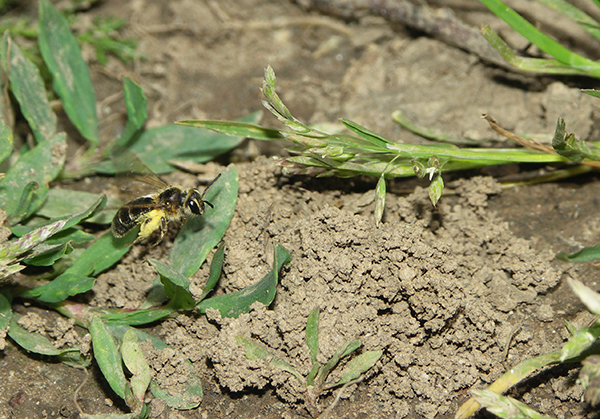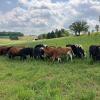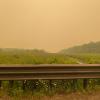Cut an apple in half through the middle.
What do you see? Do you notice a star-shaped cluster of seeds?

Those seeds are the result of the hard work done by a tiny pollinator many months ago. If there are two seeds in each of the five points, the apple was completely pollinated, meaning enough pollen was transferred to the stigma of the apple blossom to make those seeds. A blossom that is insufficiently pollinated will develop into an apple that is small and lopsided, and a blossom that goes unpollinated will of course produce no apple at all.
The U.S. Apple Association has declared October to be National Apple Month. While it’s a time to celebrate apples—as cider, in a pie, or caramel dipped—we feel you can’t celebrate apples without celebrating the hardworking pollinators that make them possible!
Between April and May apple orchards explode into airy masses of pink and white blossoms. Each blossom is an opportunity, advertising sweet nectar rewards to hungry pollinators. Apple growers have experimented with many schemes to produce higher yield without the expense and ‘nuisance’ of bringing in managed honey bees, including transferring pollen by hand, spraying pollen onto blossoms, dumping it from helicopters, and even using shotguns with pollen-filled cartridges. However, bees continue to be the best tool for the job. Apple blossoms don’t open all at once, even on the same tree, but open sequentially over a period of days to avoid self-pollination. The presence of bees in the orchard, visiting flowers as they open and not wasting time with spent or unopened buds means a lot of pollen gets where it needs to go.
Moreover, native solitary bees, such as those profiled below, are even better adapted to apple pollination. Several nest in the ground right within the orchard, can fly at much lower temperatures than honey bees, and—partly because they don’t make frequent trips back to a hive—stay out longer and pollinate more efficiently than honey bees.
Several native bee species have shown promising results as alternative pollinators of apple orchards. Research on fruit orchards from Spain to Mexico, Nova Scotia to the U.S. Southwest have found native bees to be effective pollinators of tree fruit including apples, pears, almonds, cherries, and more. In fact, they have likely been their only pollinators for millennia. As managed honey bees suffer from population declines, increased demand, and impacts from a number of environmental factors, it’s encouraging to know there are hundreds of other species “waiting in the wings.”
Dozens of bee species have been found to be candidates for apple pollination. Falling into two main categories, the largest group (approx. 70%) are ground nesting, meaning they make their home in tunnels excavated from the earth like ants. Other species include cavity nesters. Cavity nesters make use of existing cavities in dead wood, hollow stems, or in the case of bumble bees, abandoned rodent burrows.
Ground nesting bees are advantageous in that they live right in the orchards they are meant to pollinate – no lengthy commutes to get to work! Bees in the genus Andrena include large mining bees who deposit two to three times more pollen than honey bees, and small mining bees that can form large nesting aggregations. These bees are prized by orchardists as they are often the first to emerge in the spring, often timed perfectly to the flowering of apples.
The cavity-nesting bees of the genus Osmia show perhaps the most promise as alternative pollinators as they can be “managed” by providing large densities of nesting material to encourage large populations year after year. Populations can be built up over time and even transported when dormant with negligible impact on their health.


The cavity-nesting bees of the genus Osmia show perhaps the most promise as alternative pollinators as they can be “managed” by providing large densities of nesting material to encourage large populations year after year. Populations can be built up over time and even transported when dormant with negligible impact on their health.
While you may find dozens, if not hundreds of bee species in apple orchards, the graphic below illustrates several that have shown promise for their use as potential pollinators of commercial apple orchards in the Eastern U.S. For more information check out Wild Pollinators of Eastern Apple Orchards, available as a free download, or order Managing Alternative Pollinators.





